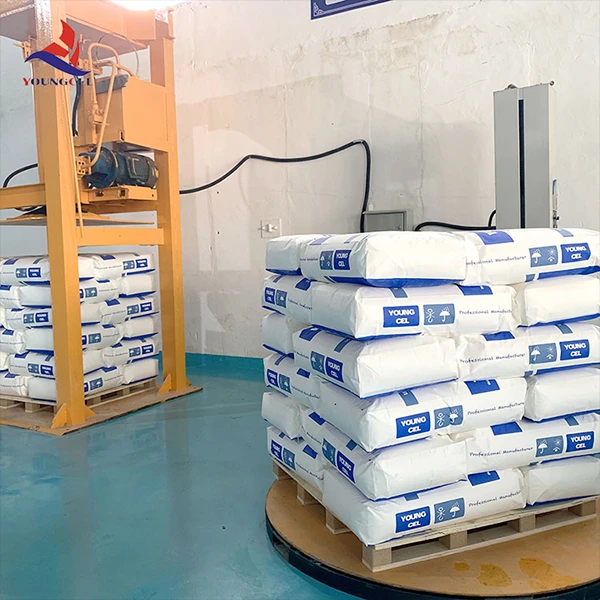Understanding Cellulose Ether HEMC Properties, Applications, and Benefits
Cellulose ethers, derived from cellulose, are vital ingredients in various industries, particularly in construction, pharmaceuticals, and food production. Among these compounds, Hydroxyethyl Methyl Cellulose (HEMC) stands out due to its unique properties and versatility. This article aims to provide a comprehensive overview of HEMC, exploring its characteristics, applications, and benefits.
What is HEMC?
Hydroxyethyl Methyl Cellulose is a non-ionic cellulose ether produced by the etherification of cellulose, a natural polymer found in plant cell walls. The process involves substituting some of the hydroxyl groups in cellulose with hydroxyethyl and methyl groups. The resulting polymer possesses solubility in both hot and cold water, leading to a wide range of applications.
Properties of HEMC
HEMC is characterized by its excellent thickening, binding, and film-forming properties. It exhibits a pseudo-plastic behavior, which means it becomes less viscous when subjected to shear stress, making it suitable for products that require easy application but a stable end result. This shear-thinning property enables it to be used in construction materials, such as mortars and adhesives, which need to maintain consistency during mixing and application.
Furthermore, HEMC is known for its water retention capabilities. This property is particularly important in construction applications, where maintaining moisture in cement-based mixtures is crucial for achieving optimal hydration and curing. HEMC can also enhance the workability of cementitious materials, allowing for smoother application and improved finish quality.
Another notable characteristic of HEMC is its ability to promote adhesion and compatibility with various substances, while remaining biocompatible. This makes it suitable for use in the pharmaceutical sector, where it is often used as a binder, thickening agent, or stabilizer in formulations.
Applications of HEMC
cellulose ether hemc

1. Construction Industry HEMC is widely used in the formulation of various construction materials, including plasters, tile adhesives, and self-leveling compounds. Its thickening properties help to enhance the viscosity and workability of these products, facilitating easier application and improving overall performance.
2. Food Industry In the food sector, HEMC serves as a thickening and stabilizing agent in sauces, dressings, and dairy products. It helps to maintain texture and improve mouthfeel, making it a valuable ingredient in food formulations.
3. Pharmaceuticals In drug formulations, HEMC functions as a binder and controlled-release agent. Its biocompatibility ensures that it can be safely used in various pharmaceutical products, such as tablets and ointments.
4. Cosmetics The cosmetic industry utilizes HEMC for its thickening and emulsifying properties in creams, lotions, and gels. It helps to stabilize products and maintain their desired viscosity, enhancing user experience.
Benefits of Using HEMC
The incorporation of HEMC in various formulations offers several benefits. Firstly, it contributes to improved product stability and consistency. Secondly, its ability to maintain moisture retention is critical for products needing prolonged curing times, especially in construction applications. Additionally, HEMC provides enhanced texture and mouthfeel in food applications, contributing to the overall sensory experience. Lastly, its non-ionic nature and biocompatibility make it an ideal choice in applications requiring safety and performance.
Conclusion
Hydroxyethyl Methyl Cellulose (HEMC) is a versatile and valuable cellulose ether with a wide range of applications across various industries. Its unique properties, including thickening, binding, and film-forming capabilities, coupled with its non-toxic nature, make it essential in products used in construction, food, pharmaceuticals, and cosmetics. As industries continue to innovate and develop more sophisticated formulations, HEMC will undoubtedly play a critical role, ensuring that products remain effective and user-friendly.
-
Rdp Powder: Key Considerations for Wholesalers in the Building Materials IndustryNewsJul.08,2025
-
Key Considerations for Wholesalers: Navigating the World of Hpmc - Based ProductsNewsJul.08,2025
-
Hpmc Detergent: Key Considerations for WholesalersNewsJul.08,2025
-
Key Considerations for Wholesalers: China Hpmc For Tile Adhesive, Coating Additives, Concrete Additives, and MoreNewsJul.08,2025
-
Crucial Considerations for Wholesalers: Navigating the World of Construction MaterialsNewsJul.08,2025
-
Key Considerations for Wholesalers Sourcing Additive For Cement, Additive For Concrete, Additive For Putty from Additive Manufacturer Shijiazhuang Gaocheng District Yongfeng Cellulose Co., Ltd.NewsJul.08,2025




